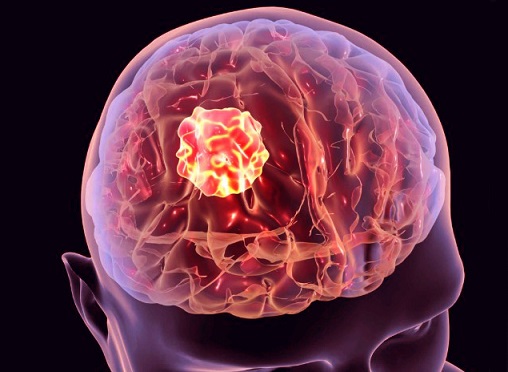Hidden RAS Mutations in Brain Tumors Could Be More Dangerous Than Previously Thought
Nikhil Prasad Fact checked by:Thailand Medical News Team Apr 26, 2025 3 hours, 37 minutes ago
Medical News: RAS Gene Family Under the Spotlight in Brain Tumor Research
A group of Brazilian scientists has published an in-depth study shedding light on a largely overlooked contributor to the progression of brain cancers — mutations and dysregulation in the RAS gene family. The research was conducted by experts from the Laboratório de Biomedicina do Cérebro at the Instituto Estadual do Cérebro Paulo Niemeyer and the Universidade Federal do Rio de Janeiro, including the Program in Pathological Anatomy and the Laboratory of Cellular Morphogenesis.
 Hidden RAS Mutations in Brain Tumors Could Be More Dangerous Than Previously Thought
Hidden RAS Mutations in Brain Tumors Could Be More Dangerous Than Previously Thought
Despite their limited visibility in central nervous system (CNS) tumors, the RAS genes — KRAS, HRAS, and NRAS — are now believed to play a much more significant role than previously thought, particularly in the most aggressive forms of brain cancer like glioblastoma. This
Medical News report explores these findings, which could pave the way for new targeted treatments for patients battling brain tumors.
What Are RAS Genes and Why Do They Matter
RAS genes produce proteins that act as molecular switches inside cells, controlling processes like cell growth and survival. When they work properly, RAS proteins turn on and off as needed. But when these genes are mutated, they become stuck in the “on” position, leading to unchecked cell growth — a hallmark of cancer.
While RAS mutations are commonly found in cancers like pancreatic and lung cancer, they are rarely found in primary brain tumors. However, the researchers found that even without direct mutations, the RAS signaling pathway can become overactivated through other means. These include genetic alterations such as NF-1 gene loss, overactive growth factor receptors like EGFR and PDGFR, and epigenetic changes that suppress RAS inhibitors.
The Role of RAS in Brain Tumor Types
Glioblastoma (GBM) — the most common and deadly brain cancer in adults — was found to frequently show signs of RAS pathway overactivation. Although only about 1% of GBM cases feature direct KRAS mutations, indirect activation of RAS-related pathways is much more common. This includes changes in genes that influence RAS activity and the appearance of abnormal growth factor receptors.
Interestingly, while KRAS is abundantly expressed in the brain, it usually plays a role in normal neuronal function. But in the context of brain cancer, the same protein seems to help drive malignant transformation and tumor progression. Even in low-grade tumors, such as grade 2 oligodendrogliomas, KRAS mutations were detected in 4% of samples.
The study also draws attention to the fact that RAS mutations are frequently seen in brain metastases — cancers that spread to the brain from other parts of the body. Patients with KRAS mutations in lung, colon, or melanoma cancers were shown to have higher risks of developing brain metastases and poorer overall s
urvival rates.
Why Therapies Targeting RAS Matter
Historically, RAS proteins have been considered “undruggable,” meaning that targeting them with medications was extremely difficult. But this has begun to change. Newer strategies include:
-Drugs that block post-translational modifications RAS proteins need to function
-MEK and BRAF inhibitors that disrupt downstream RAS signaling
-SOS1 inhibitors that prevent RAS activation
-Covalent inhibitors specifically designed for certain RAS mutations like KRASG12C
One promising drug, BI-346, has shown ability to block SOS1, thus preventing RAS from becoming active. Other advanced compounds, such as Sotorasib and Adagrasib, specifically target the KRASG12C mutation and are undergoing clinical trials, some even involving patients with brain metastases.
Future Directions and Ongoing Trials
Although direct RAS mutations in primary brain tumors are rare, clinical trials are ongoing to assess the effectiveness of targeting the RAS signaling pathway. Drugs like Ulixertinib and NEO212 are currently being tested for their effects on glioblastomas and brain metastases.
Moreover, combinations of therapies like immune checkpoint inhibitors, MEK inhibitors, and novel small molecules are showing early promise, especially in tumors with hyperactive RAS signaling.
Conclusion
While RAS mutations may not be the primary cause of brain tumors like glioblastoma, they appear to contribute significantly to tumor aggressiveness and resistance to treatment. This study strongly suggests that RAS-driven pathways are key players in brain cancer development and progression — even if the genes themselves remain unmutated. With new therapies being developed and trials underway, there is hope that targeting the broader RAS signaling network may finally offer new treatment avenues for these deadly tumors.
The study findings were published in the peer reviewed International Journal of Molecular Sciences.
https://www.mdpi.com/1422-0067/26/9/4104
For the latest Cancer News, keep on logging to Thailand
Medical News.
Read Also:
https://www.thailandmedical.news/news/malignant-glioma-treatment-more-complex-than-ever-with-tumors-evolving-into-hyper-intelligent-networks
https://www.thailandmedical.news/news/french-and-swiss-scientist-develop-engineered-natural-killer-cells-for-treating-glioblastoma
https://www.thailandmedical.news/news/covid-19-and-glioblastoma-onset
https://www.thailandmedical.news/articles/cancer
https://www.thailandmedical.news/pages/thailand_doctors_listings
